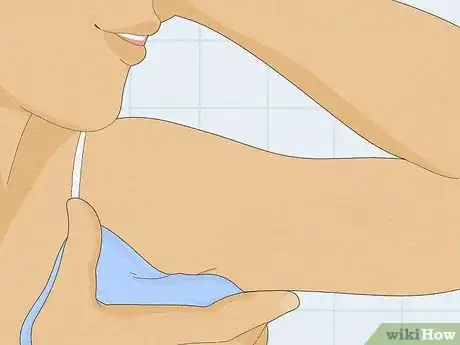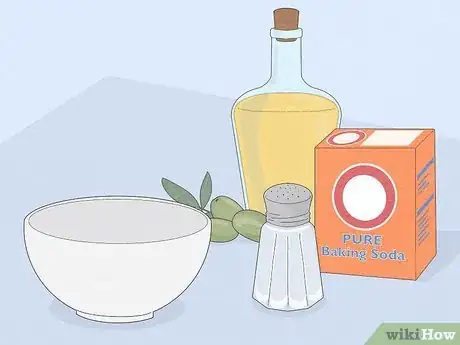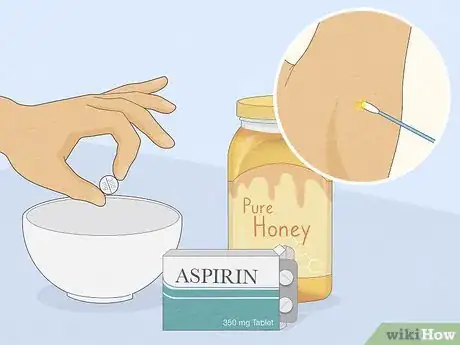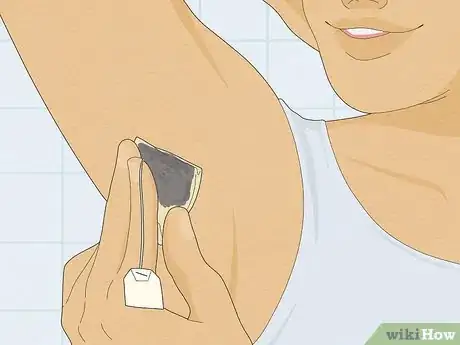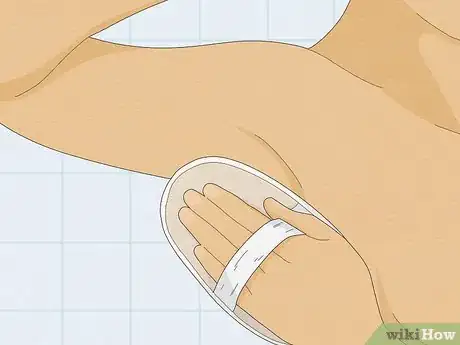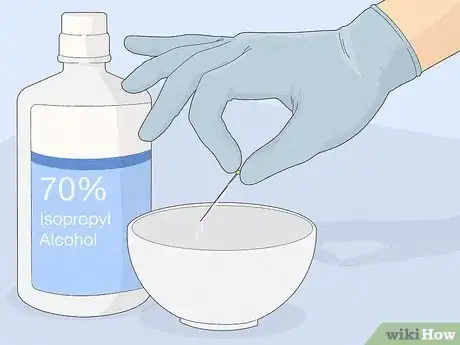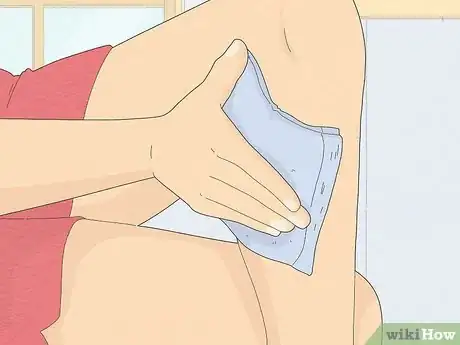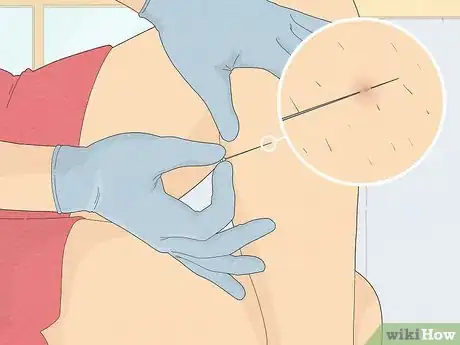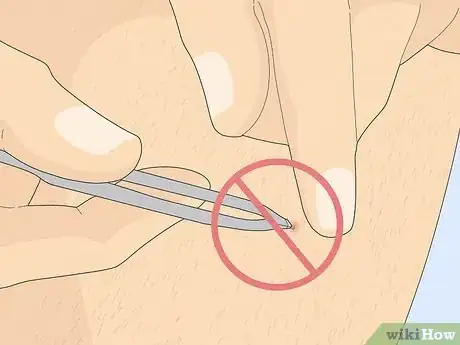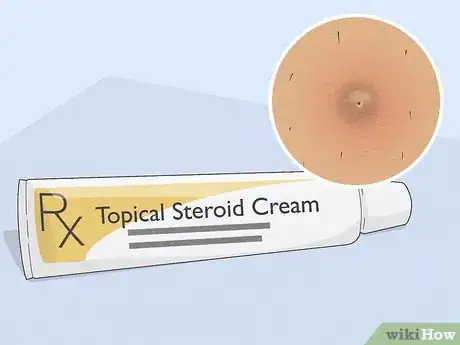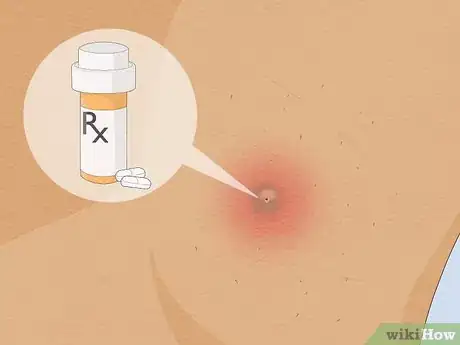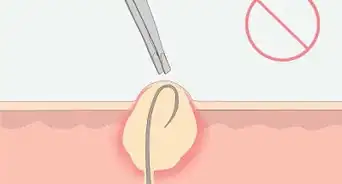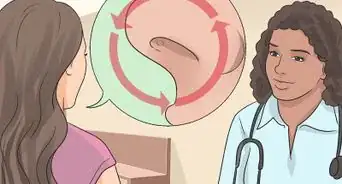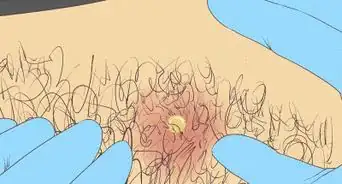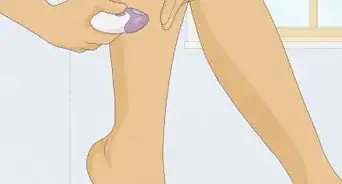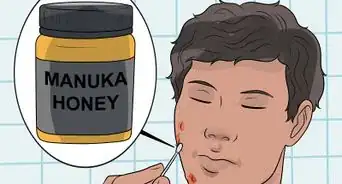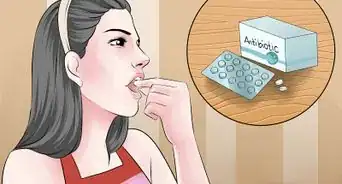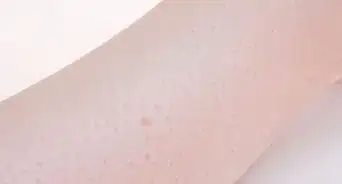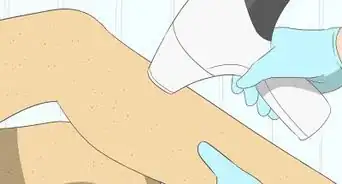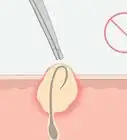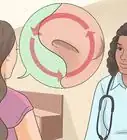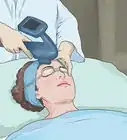This article was co-authored by Mohiba Tareen, MD. Mohiba Tareen is a board certified Dermatologist and the founder of Tareen Dermatology located in Roseville, Maplewood and Faribault, Minnesota. Dr. Tareen completed medical school at the University of Michigan in Ann Arbor, where she was inducted into the prestigious Alpha Omega Alpha honor society. While a dermatology resident at Columbia University in New York City, she won the Conrad Stritzler award of the New York Dermatologic Society and was published in The New England Journal of Medicine. Dr. Tareen then completed a procedural fellowship which focused on dermatologic surgery, laser, and cosmetic dermatology.
This article has been viewed 149,913 times.
Ingrown hairs develop when the hair grows back into the skin rather than out of the skin, which can lead to inflammation and an infection.[1] Individuals usually have ingrown hairs in areas where hair has been removed by shaving, tweezing, or waxing, and can be more common in people with tightly curled hair, as the natural curl will push the hair back into the skin. In women, the most common areas where ingrowns can develop are the armpits, the pubic area, and on the legs. You can relieve an ingrown hair under the skin by reducing the risk of an infection in the area and by using exfoliation to relieve any discomfort or pain.
Steps
Using Exfoliation
-
1Apply a warm washcloth to soothe and clean the area. To keep the ingrown hair clean and lower the risk of infection, you can soak a clean, cotton washcloth in warm water and rest it over the ingrown hair. Keep the washcloth on for three to five minutes and repeat this three to four times a day. Be sure to use a clean, fresh washcloth each time you do this.[2]
- You can also do this as a way to exfoliate the area, making it easier for the hair to eventually fall out on its own.
-
2Make a baking soda, salt, and olive oil mixture. Exfoliating the area with the ingrown hair can help to loosen and remove the hair. You can use natural ingredients like baking soda and olive oil to make a paste that will help to prevent infection and soften the area. However, be very gentle when applying the paste to the ingrown hair.
- Combine ½ teaspoon baking soda, sea salt or sugar, and 1-2 tablespoons of olive oil. The olive oil has antibacterial properties and will keep the ingrown hair from getting infected.
- Apply the mixture with a Q-tip or a cotton ball to the ingrown hair.
- Use the tip of your finger to softly rub in the mixture in circular motions. Do three to five clockwise motions and then three to five counterclockwise motions. Rinse the area off with warm water and pat it dry. You should also wash your hands and put the towel you used to dry the area in the laundry to reduce the risk of infection.
- Repeat the exfoliation with baking soda and olive oil at least two times a day.
Advertisement -
3Soften the hair using aspirin. Aspirin can help to dissolve the skin around the ingrown hair and soften the hair, making it more likely to loosen during exfoliation.
- Take a 325 mg tablet of aspirin and soak it in 1 tablespoon warm water. Make sure you are using an “old-fashioned” tablet that can dissolve in water, not enteric coated aspirin. Check that the tablet does not have a hard outer shell.
- Put a few drops, three to five, of honey into the dissolved aspirin. The honey will work with the acidic aspirin to help “draw out” the ingrown hair.
- Apply the mixture with a Q-tip to the ingrown hair and let it dry. You can leave the mixture on overnight so the honey can dry.
- Rinse the dry mixture off with warm water and pat it dry. Repeat the application of the mixture to the ingrown hair every night.
-
4Draw out the hair with black tea. Black tea may help to soften and draw out the ingrown hair. Take a tea bag of black tea and soak it in warm water. Then, place the wet tea bag over the ingrown hair, leaving it on for five to ten minutes.
- Apply the wet tea bag every two hours on the first day the ingrown hair appears. Repeat the application twice a day after the first day.
-
5Use an exfoliating pad or brush to loosen the hair. Once the hair starts to soften up and become loose, you can use an exfoliating pad or brush to gently rub the area until the ingrown hair becomes dislodged from your skin. Use gentle, circular motions on the ingrown hair with the exfoliating pad, doing three to five clockwise motions and then three to five counterclockwise motions.
- Check to see if the ingrown hair has been removed. If it has not been removed, repeat the motions again until the hair falls out. Be very gentle as you exfoliate the area to reduce the risk of infection or scarring.
Using a Sterilized Needle
-
1Sterilize the needle before you use it. Though squeezing, poking, or prodding the ingrown hair can lead to infection, you can try to raise the ingrown with a sterilized needle.[3] Use a loose needle, such as a safety pin or a sewing needle. You can easily disinfect a needle by soaking it in rubbing alcohol.
- Wear medical gloves if available to avoid contaminating the needle.
- Other ways to sterilize needles include steaming.
-
2Soften the skin with a warm wash cloth. Before you use the sterilized needle on the ingrown, you should place a warm wash cloth over the ingrown hair. Leave it on for a few minutes to allow the skin around the ingrown hair to soften.[4] This will make it easier to raise the ingrown with the needle.[5]
-
3Insert the needle under the hair loop to raise the ingrown hair. Hold the needle in one hand and try to pull the skin away from the ingrown hair until it is exposed. You should see a hair curled in on itself just below the surface of your skin. Use the needle to raise the ingrown hair out of your skin until the hair tip is exposed. Be very gentle as you do this, as you do not want to poke yourself or damage the area around the ingrown hair.[6]
-
4Do not shave, tweeze, or wax the area around the ingrown hair. If you tend to wax, shave, or tweeze the area with the ingrown hair, take a break and let your skin heal. Shaving, tweezing, or waxing the area will only irritate in the ingrown hair and could lead to the development of more ingrown hairs in the area.
Using Medication
-
1Ask your doctor about drugs that help to remove dead skin cells. Retinoid drugs, such as tretinoin and Retin-A, can help to clear dead skin cells from your skin.[7] They can also reduce your risk of ingrown hairs if you have a dark complexion, as these drugs reduce the thickening and darkening of your skin, making your skin less prone to ingrowns.[8]
-
2Talk to your doctor about creams to reduce inflammation. Steroid creams can help to reduce inflammation of your skin, which can then lower your risk of ingrown hairs.[9]
-
3Speak to your physician about antibiotics if the area gets infected. If the area around the ingrown hair becomes infected, your doctor can prescribe antibiotic ointment or oral antibiotics.[10]
Expert Q&A
Did you know you can get expert answers for this article?
Unlock expert answers by supporting wikiHow
-
QuestionHow do you prevent ingrown hairs?
 Mohiba Tareen, MDMohiba Tareen is a board certified Dermatologist and the founder of Tareen Dermatology located in Roseville, Maplewood and Faribault, Minnesota. Dr. Tareen completed medical school at the University of Michigan in Ann Arbor, where she was inducted into the prestigious Alpha Omega Alpha honor society. While a dermatology resident at Columbia University in New York City, she won the Conrad Stritzler award of the New York Dermatologic Society and was published in The New England Journal of Medicine. Dr. Tareen then completed a procedural fellowship which focused on dermatologic surgery, laser, and cosmetic dermatology.
Mohiba Tareen, MDMohiba Tareen is a board certified Dermatologist and the founder of Tareen Dermatology located in Roseville, Maplewood and Faribault, Minnesota. Dr. Tareen completed medical school at the University of Michigan in Ann Arbor, where she was inducted into the prestigious Alpha Omega Alpha honor society. While a dermatology resident at Columbia University in New York City, she won the Conrad Stritzler award of the New York Dermatologic Society and was published in The New England Journal of Medicine. Dr. Tareen then completed a procedural fellowship which focused on dermatologic surgery, laser, and cosmetic dermatology.
FAAD Board Certified Dermatologist Take a warm shower or hold a warm compress against your skin before shaving or waxing to help stimulate blood flow. You can also massage your skin for a few minutes to help bring the hairs out of their follicles. Make sure you shave with a sharp razor blade and always shave in the direction of your hair growth. Wet your skin and use shaving cream when you shave since dry shaving can cause ingrown hairs.
Take a warm shower or hold a warm compress against your skin before shaving or waxing to help stimulate blood flow. You can also massage your skin for a few minutes to help bring the hairs out of their follicles. Make sure you shave with a sharp razor blade and always shave in the direction of your hair growth. Wet your skin and use shaving cream when you shave since dry shaving can cause ingrown hairs.
References
- ↑ Mohiba Tareen, MD. FAAD Board Certified Dermatologist. Expert Interview. 26 March 2020.
- ↑ http://www.mayoclinic.org/diseases-conditions/ingrown-hair/basics/lifestyle-home-remedies/con-20034717
- ↑ http://www.mayoclinic.org/diseases-conditions/ingrown-hair/basics/lifestyle-home-remedies/con-20034717
- ↑ Mohiba Tareen, MD. FAAD Board Certified Dermatologist. Expert Interview. 26 March 2020.
- ↑ http://www.mayoclinic.org/diseases-conditions/ingrown-hair/basics/lifestyle-home-remedies/con-20034717
- ↑ http://www.mayoclinic.org/diseases-conditions/ingrown-hair/basics/lifestyle-home-remedies/con-20034717
- ↑ Mohiba Tareen, MD. FAAD Board Certified Dermatologist. Expert Interview. 26 March 2020.
- ↑ http://www.mayoclinic.org/diseases-conditions/ingrown-hair/basics/treatment/con-20034717
- ↑ http://www.mayoclinic.org/diseases-conditions/ingrown-hair/basics/treatment/con-20034717
About This Article
To remove an ingrown hair from under the skin, soak a washcloth in warm water and lay it over the area for 3 to 5 minutes, which will open the skin pores and may cause the hair to fall out. If this doesn’t work, combine a teaspoon of baking soda with 2 tablespoons of olive oil to make a paste. Then, apply it to the ingrown hair with a q-tip or cotton pad. Leave it on for 5 minutes, and reapply the paste twice a day until the hair comes out. Alternatively, take a wet black teabag and place it over the ingrown hair for 5 minutes, which will soften it and encourage it to fall out. For tips from our Medical co-author on how to get medication for ingrown hairs, keep reading!

